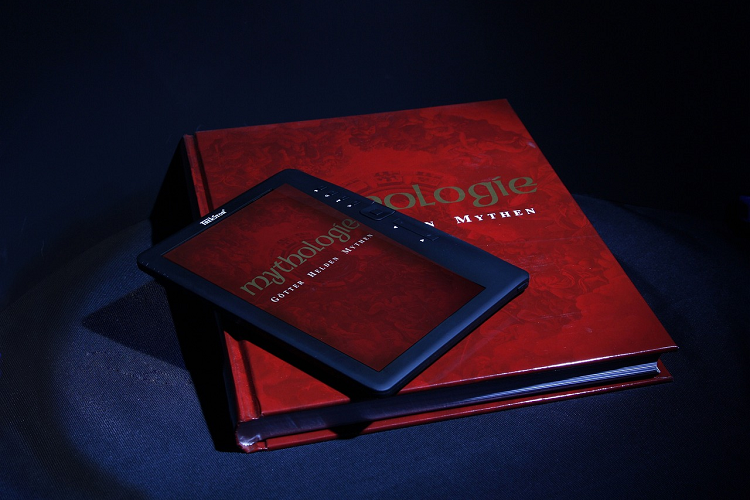So, you’re thinking to write an eBook, huh? That’s an intellectual thought; the good news is eBook writing is not that challenging if you have the right plan and you follow it.
The better news is we’ve got a foolproof 7-step blueprint for writing an eBook that sells.
Whether you’re an expert looking to share your knowledge or an aspiring author hoping to build your audience – creating and selling an eBook is a great way to establish yourself as an authority, make an impact, and generate revenue.
The eBook Writing Blueprint – 7 Steps
The golden rule is keep things simple by breaking down the process into small manageable steps.
If you follow this blueprint, you’ll have a professional, polished eBook ready to launch quickly.
Let’s get started!
Choose Your eBook Topic and Title
First and foremost, remember that choosing the right topic and title is the essence of writing a perfect eBook that sells.
- The topic should be something you know well and are passionate about. Readers can sense if you don’t fully understand the subject or aren’t enthusiastic about it.
- Brainstorm a list of your areas of expertise and interests.
- Think about questions people frequently ask you or problems you often help solve. One of these could make a great eBook topic.
- Consider trending subjects that would interest your target audience.
- Once you have a few possibilities, evaluate them based on potential demand and competition.
- Quickly search to see how many other eBooks exist on the subjects.
- While you want a popular topic, avoid anything too saturated.
With a topic selected, spend time crafting a compelling title. The title is the first thing people see and can make or break the decision to buy your eBook.
- Use powerful words and numbers, ask a provocative question, or promise a big benefit or solution. A good title conveys what’s in it for the reader.
- Before starting to write, create an outline to organize your thoughts.
- Determine your eBook’s main points and structure, and group together related ideas.
- Number the sections in a logical order to ensure a smooth flow.
An outline provides direction so you can write confidently without feeling overwhelmed by a blank page.
With a well-chosen topic, attention-grabbing title, and outline in place, you’ll be ready to craft an eBook that educates, inspires, and motivates readers.
Define Your Target Audience
To become successful in eBook Writing, it’s important to determine your target audience, which refers to the individuals most likely to purchase or read your book.
- Do some research to determine potential readers interested in your eBook topic.
- See what kinds of people are active in relevant online communities, blogs, and forums.
- Please pay attention to their questions and concerns.
- Create reader personas that represent different segments of your target audience.
- Give each persona a name, photo, bio, goals, challenges, and key questions they need to be answered.
- Focus on a primary reader persona, but also consider secondary personas. Your eBook should appeal to as many potential readers as possible while still meeting the needs of your primary persona.
- Consider your readers’ key questions, pain points, and desired outcomes. How will your eBook help them? What will they learn or be able to do after reading it?
- Determine your readers’ level of knowledge and tailor the content accordingly.
- Explain terms and concepts clearly for beginners but avoid over-explaining for more advanced readers.
- Aim for a friendly, empathetic tone that makes readers feel you understand and speak directly to them.
- Use “you” and “your” frequently.
- To effectively connect with your desired audience, it is crucial to select a suitable title, cover image, and marketing messages that will highly appeal to them. These elements convey the key benefits and solutions your eBook offers readers.
Defining your target audience is the foundation for creating an eBook that sells. With a clear understanding of your readers and what they need, you can craft content and marketing tailored perfectly for them. Meet their needs, and they’ll be eager to purchase your invaluable resource!
Create an Outline With 10-15 Chapters
To create an effective eBook outline, start with 10 to 15 chapters. This may seem like a lot, but it will ensure you cover the topic thoroughly while keeping each chapter focused.
- Determine your chapter topics. Come up with a list of possible chapter topics that flow logically. For an eBook on time management, chapter topics might include the following:
- Identifying Your Priorities
- Creating a Schedule
- Managing Distractions
- Using Productivity Tools
- Evaluating Your Progress
- Flesh out each chapter
For each chapter topic, determine 3 to 5 sub-topics or points you want to cover.
For example, in the “Creating a Schedule” chapter, you might include the following:
- Decide on a scheduling system: Choose a simple to-do list, calendar, project management software, etc.
- Block out time for high-priority tasks: Schedule time each day or week focused on important work.
- Leave room for flexibility: While scheduling is important, leave some unscheduled time for unexpected tasks or downtime.
- Build in accountability: Tell a friend or colleague about your schedule to stay on track.
Use an easy-to-follow structure
To make the content easy to follow:
- Use headers to break up sections within each chapter.
- Numbered or bulleted lists for steps.
- And short paragraphs focused on one main idea.
Using this outline approach for your eBook ensures you cover the topic thoroughly and in a logical flow.
Fleshing out each chapter section by section makes the writing process much more manageable.
With a solid outline, you’ll be well on your way to writing an eBook that provides real value to your readers.
Set a Realistic Writing Schedule
To write an eBook that sells, you need to establish a realistic writing schedule and stick to it.
- Set concrete goals and deadlines
Set a weekly word count goal, like 5,000 to 10,000 words per week, and break that down into a daily writing goal.
For example, aim to write 1,000 to 2,000 words Monday through Friday. Hold accountable to these goals by setting deadlines for each chapter and eBook.
Find your most productive time
Determine when you’re most focused and energized, and fix that time off each day for writing.
For many authors, the early morning after some exercise is ideal.
Turn off distractions like email and social media during your scheduled writing time.
- Start with an outline
A detailed outline will make writing much easier and help you achieve your goals. Figure out your eBook’s structure, main topics, and subtopics. Then break each chapter into sections. Outline each section before diving into writing the full draft.
- Take regular breaks
While discipline is important, remember to recharge. Take short breaks every 90 minutes or so to rest your mind. Step away from your desk, stretch, or go for a quick walk.
Longer breaks—even entire days off—are also helpful. Come back to your writing refreshed and rejuvenated.
Get accountability partners
Tell friends or family members about your eBook and goals so they can check in on your progress. You might also join an online community of writers for support.
Having accountability partners who encourage your efforts can motivate you to achieve your writing schedule.
Following these tips for setting a realistic writing schedule will make the eBook Writing process much more achievable.
Stay disciplined, start with an outline, take regular breaks, find your most productive time, and get accountability partners. Before you know it, you’ll have a complete eBook draft ready to publish!
FAQ: eBook Writing Questions Answered
Many aspiring eBook authors have questions about the writing process. Here are some of the most frequently asked questions answered:
- How long should my eBook be?
The ideal eBook length is 20 to 50 pages or 5,000 to 15,000 words. This provides enough depth to cover a topic thoroughly while still being a quick read. If your eBook is longer, readers may need more value for the money. It can seem overwhelming if shorter, and readers may lose interest.
- Should I include images or multimedia?
Including visuals like images, graphics, screenshots, diagrams, charts, and video or audio clips is a great way to enhance your eBook. They help break up blocks of text, demonstrate concepts, and cater to visual learners.
However, don’t overcrowd your eBook with multimedia or make the file size too large. Aim for 1 to 3 visuals per 5 pages of content.
- What tools do I need to write and format an eBook?
You’ll need a few essential tools:
You can write your content using a word processor like Microsoft Word or Google Docs.
eBook formatting software like Vellum, Caliber, or Reedsy eBook Editor to format your Word doc into an eBook.
Image editing software like Canva or Photoshop to create or edit visuals.
Optional: screen recording software like Loom or Camtasia to create video clips.
- How do I promote and sell my eBook?
Some effective ways to promote your eBook include:
- Building an email list and promoting to your subscribers.
- Guest blogging on related blogs and websites.
- Running a social media ad campaign on platforms like FaceBook or BookBub.
- Applying to eBook promotion sites and newsletters like Bargain Booksy, Fussy Librarian, or E. Reader News Today.
- Selling on major eBook retailers like Amazon Kindle, Barnes & Noble Nook, and Kobo.
All in All…
By following these steps, you’ll be well on your way to creating an eBook that provides value to readers and generates sales.
Whether you want to generate some side income or build your business, eBook writing can be rewarding if you go in with a plan.
Stop reading… this blog post and get to work – your eBook is waiting to be written! The money and impact are out there; you must take that first step.
Speaking of the first step…
Most people are afraid of taking the first step.
Fear not – That’s where you have Lincoln Writes eBook Writing service waiting for you.
Call them now or reach out through Lincoln Writes and let the professionals from Lincoln Writes bring
your eBook into the limelight you always desired.
Author Bio:
Laura Parker is a professional blog writer with over 5 years of experience in the industry. She holds a degree in English Literature and has a passion for writing engaging, informative, and creative content. Laura specializes in writing on a variety of topics including lifestyle, health, wellness, travel, and technology. When she’s not writing, Laura enjoys reading, exploring new places, and trying out new recipes in the kitchen. She is a firm believer in the power of self-care and is always looking for new ways to incorporate wellness into her daily routine.




